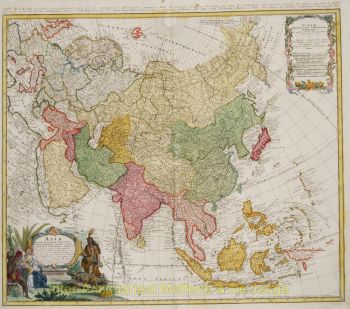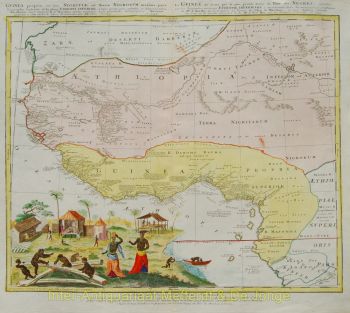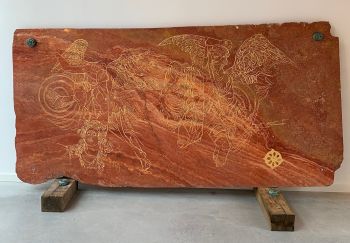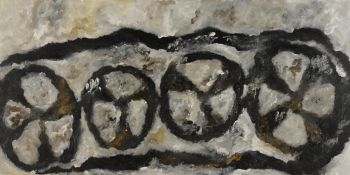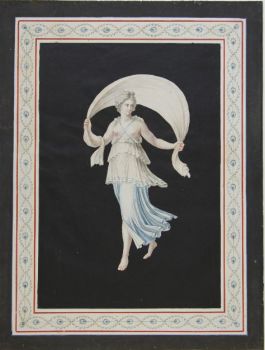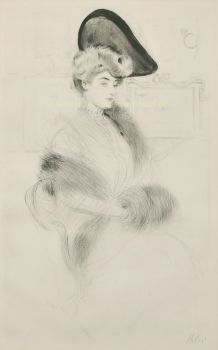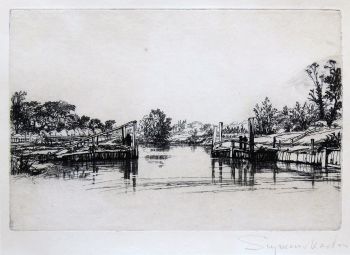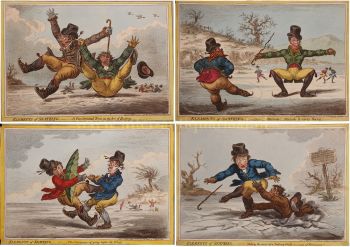Battle of the Mivian Bridge 1666
Charles Le Brun
PapierImprimer
84 ⨯ 172 cm
€ 3.750
Inter-Antiquariaat Mefferdt & De Jonge
- Sur l'oeuvre d'artTHE BATTLE OF THE MILVIAN BRIDGE Engraving on three plates made in 1666 by Gerard Audran after the design by Charles Le Brun. Size: approx. 84,5 x 172,5 cm. The Battle of the Milvian Bridge took place between the Roman Emperors Constantine I and Maxentius on 28 October 312 AD. It takes its name from the Milvian Bridge, an important route over the Tiber. Constantine won the battle and started on the path that led him to become the sole ruler of the Roman Empire. Maxentius drowned in the Tiber during the battle; his body was later taken from the river and decapitated, and his head was paraded through the streets of Rome. It is said that the battle marked the beginning of Constantine's conversion to Christianity. Constantine and his soldiers had a vision sent by the Christian God. This was interpreted as a promise of victory ("In Hoc Signo vincit") if the sign of the Chi Rho, the first two letters of Christ's name in Greek, was painted on the soldiers' shields. The Arch of Constantine, erected in celebration of the victory, attributes Constantine's success to divine intervention. On this very large engraving by 26 year old Gérard Audran, we see Constantine followed by a small crucifix, bearing a javelin and charging across the summit of the Milvian Bridge just outside of Rome toward terrified enemies who have become prey to the trap they had set for the soon-to-be victorious Christian emperor. (Maxentius had partially destroyed the bridge during his preparations for a siege of Rome.) In the end, Maxentius is the unintended victim of his own treachery. Framed by the bridge’s ruined timbers, he grasps the neck of his terrified horse as he plunges backward toward his demise. Le Brun reminds his viewers that soldiers from Rome sometimes received a fee for each head of an enemy they presented to their leaders. On the bridge, in a scene recalling one from the Column of Trajan, a proud rider eagerly holds out to Constantine the head from one of the bodies sprawled beneath them. Another rider, galloping in the center of the picture, cradles his prize inside his shield. And just above the royal coat of arms in the engraving’s dedication at the bottom centre, the most terrifying episode foreshadows what will soon become of Maxentius. In a moment of grotesque efficiency, a soldier clenches between his teeth the hair of a severed head and uses both hands to decapitate his next victim, a weakened cavalryman who lies pinned beneath his fallen horse. Literature: Louis Marchesano “Charles Le Brun’s Constantine prints for Louis XIV and Jean Baptiste Colbert” Price: Euro 3.750,-
- Sur l'artiste
Charles Le Brun était un peintre français, physionomiste, théoricien de l'art et directeur de plusieurs écoles d'art de son temps. En tant que peintre de la cour de Louis XIV, qui l'a déclaré "le plus grand artiste français de tous les temps", il était une figure dominante de l'art français du XVIIe siècle et très influencé par Nicolas Poussin.
Êtes-vous intéressé par l'achat de cette oeuvre?
Artwork details
Related artworks
Artiste Inconnu
A large wall map of Asia by Nicolas de Fer 1647 - 1720
Prix sur demandeZebregs & Röell - Fine Art - Antiques
1 - 4 / 24Artiste Inconnu
Bracelet en diamant du XVIIIe siècle avec intailles vieilles de 2000 ans1790
€ 23.000Adin Fine Antique Jewellery
 Sélectionné par
Sélectionné parDanny Bree
Lawrence Alma-Tadema
"Caracalla and Geta: Bear Fight in The Coliseum, AD 203" 1907
Prix sur demandeGallerease Selected
 Sélectionné par
Sélectionné parDanny Bree
1 - 4 / 24- 1 - 4 / 24
- 1 - 4 / 12











